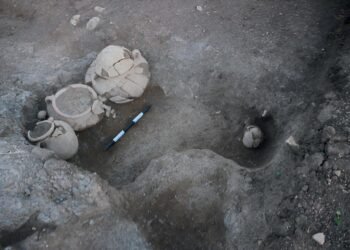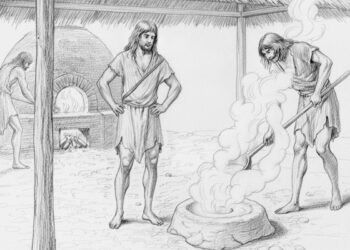In a recent study that combines biology and history, researchers have delved into the mystery surrounding mummified baboons discovered in ancient Egypt, uncovering secrets about their origin, trade routes, and cultural significance.

The mummified primates, dating back to Egypt’s Late Period (800–540 BCE), have long puzzled historians, prompting questions about how these creatures, not native to Egypt, found their way into the hearts of ancient Egyptians.
The study, led by Professor Gisela Kopp from the University of Konstanz, utilized innovative genetic analysis techniques on ancient DNA extracted from baboon mummies, providing unprecedented insights into their geographical origins.
The findings, published in the journal eLife, challenge previous theories and reveal a complex narrative of trade networks, sacred symbolism, and the intersection of Punt and Adulis, two legendary trading centers.

Ancient Egyptians, in their reverence for the god Thoth, mummified baboons and offered them as votive tokens. The mystery persisted for over a century until 2020, when researchers traced the baboons’ birthplace to the Horn of Africa. Now, Kopp’s team has refined this understanding, pinpointing the origin to a specific area around Eritrea, near the legendary port of Adulis.
Adulis, a bustling trading center between the 1st and 7th centuries CE, emerges as a pivotal location in the baboon mystery. Kopp’s genetic analysis of a mummified baboon from the Valley of the Monkeys aligns with the known expeditions to Punt, an ancient region referred to in trade records. The findings suggest that Punt and Adulis might be the same place, referred to by different names across different time periods.
The study’s groundbreaking aspect lies in its successful analysis of ancient DNA from mummified non-human primates, providing a crucial link between biological and historical data. The mummified baboons, often lacking their dangerous canine teeth, were likely imported from the Horn of Africa, specifically the Eritrean region. The removal of canine teeth, a safety measure, raises questions about the methods of importation, raising, and eventual mummification.
The cultural significance of baboons in ancient Egypt adds another layer to the mystery. Baboons, typically considered pests in Africa, held a special place in Egyptian artwork, often representing the god Thoth and embodying a dual spiritual purpose by bridging the symbolism of the sun and moon. The creatures were seen in postures of adoration toward the rising sun, reflecting ancient Egyptian religious practices.
Anthropologist Nathaniel Dominy, who collaborated with Kopp on the study, underscores the importance of baboons in shaping early trade routes and economic globalization. The findings suggest that the relationship between Egypt and Adulis marks the beginning of what researchers term the maritime spice route, a transformative force in global history.






















